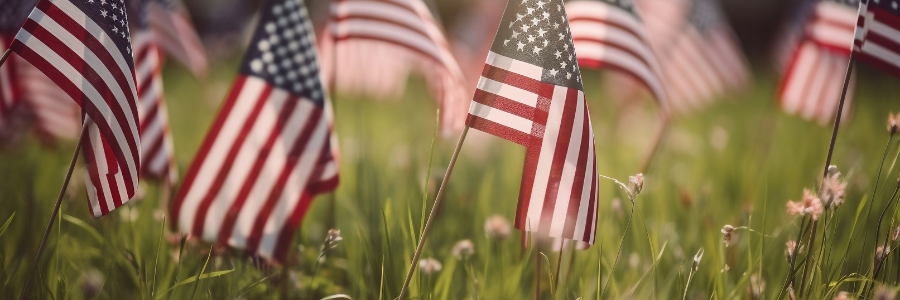

Memorial Day is considered to be the unofficial start to the summer as graduation season is in full swing and outdoor gatherings, such as trips to the beach or time by the grill become the norm. With Memorial Day right around the corner, let’s take a look at the typical weather seen over the years as well as some extremes that have occurred.
For most of its' history (first being observed nationally in 1868), Memorial Day (previously known as Decoration Day) was observed on May 30th each year. It wasn’t until about a century after it was first celebrated that Congress changed the observance of the holiday to the last Monday in the month of May, starting in 1968. Regardless of the date it falls, its' place at the tail end of May has it on the cusp of both spring and summer extremes.
With Memorial Day this year occuring on May 26th, here is a look at the averages and extremes of that day over the last 25 years for select cities in the northeast and midwest US.

Looking at climatology over the last quarter-century, Memorial Day typically has seen some form of rainfall, anywhere from one-third to one-half of the time. Washout conditions of a half inch or more make up about one-quarter to one-third of the time. Tempeartures also average on the warmer side, with many in the 70s to 80s, even in the 80s on some more rare occasions. And of course, with those more unsettled patterns, it's common to see tempeartures in the 50s and 60s given
With Memorial Day falling in the final stretches of spring (and right on the cusp of meteorological summer), severe weather tends to be the most common form of extreme weather seen during the holiday weekend.
One such instance was the Memorial Day Tornado Outbreak of 2019, which saw a destructive series of tornadoes rip through Indiana and Ohio the evening of May 27th, which ended up being the fourth costliest weather event in Ohio's history. A total of 60 tornadoes occurred on the 27th, seven of which were EF-3 or above (one EF-4 was reported). That one EF-4 tornado passed through the Dayton, OH area, resulting in $500 million in damages, 166 injuries, and one indirect fatality.
Late-May typically isn't thought of as being the time for snowstorms, however on May 28 - 29th a major snowstorm crossed the Central Plains and moved into the Upper Midwest, bringing with it moderate snowfall across the region just in time for Memorial Day (which was on the 30th that year). Cold air from Canada entrenched the the Upper Midwest with temperatures in the 30s and 40s. A swath from northern Iowa into Wisconsin saw incredible late-season snowfall, with 8" in Cherokee, Iowa, 10" in Gays Mills, Wisconsin, and 9" in Viroqua, Wisconsin.

So, what are we expecting as we head into this holiday weekend? Well, taking a look at some select cities across the country, it won't be terrible for most. We're using traffic lights in these graphics to display how ideal or not ideal conditions will be for each day this weekend. A green light will feature great weather, while a yellow light indicates some potential for disruptive weather. And of course, red lights indicate a high likelihood for bad weather. For the northeast, many places will still see some minor shower activity as low pressure slowly exits, however, this isn't enough to ruin most outdoor plans. Temperatures will also remain on the cool side to start, but slowly warm up as we get to Memorial Day itself. Even across the Upper Midwest, weather looks rather pleasant and seasonable.

Looking at other select cities across the country, it's a rather mixed bag of weather conditions. While places along the west coast look great for most, if not all, of the weekend, others like Denver and Nashville may not be so lucky with multiple days of rainy weather. No matter where you are across the country, make the best of the weekend and remember to thank those who sacrificed and risked their lives to keeping this great country safe!